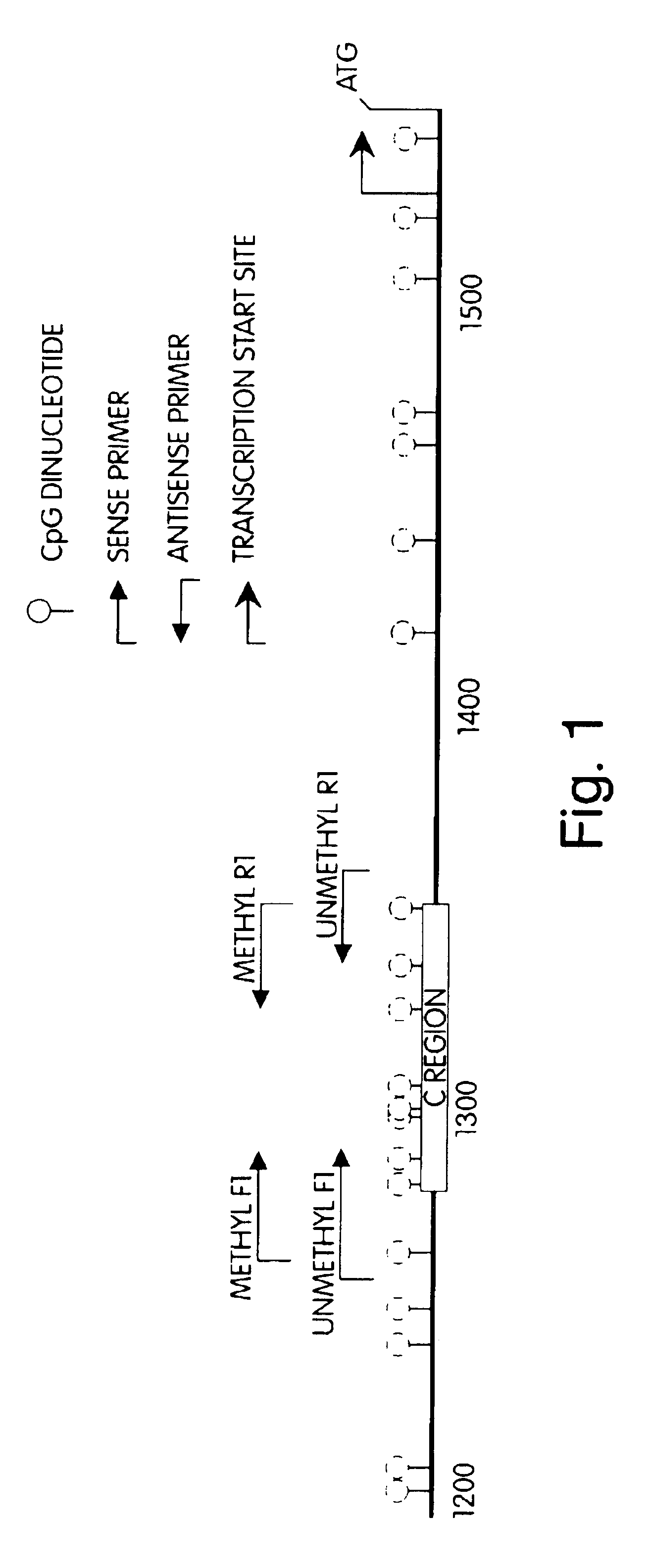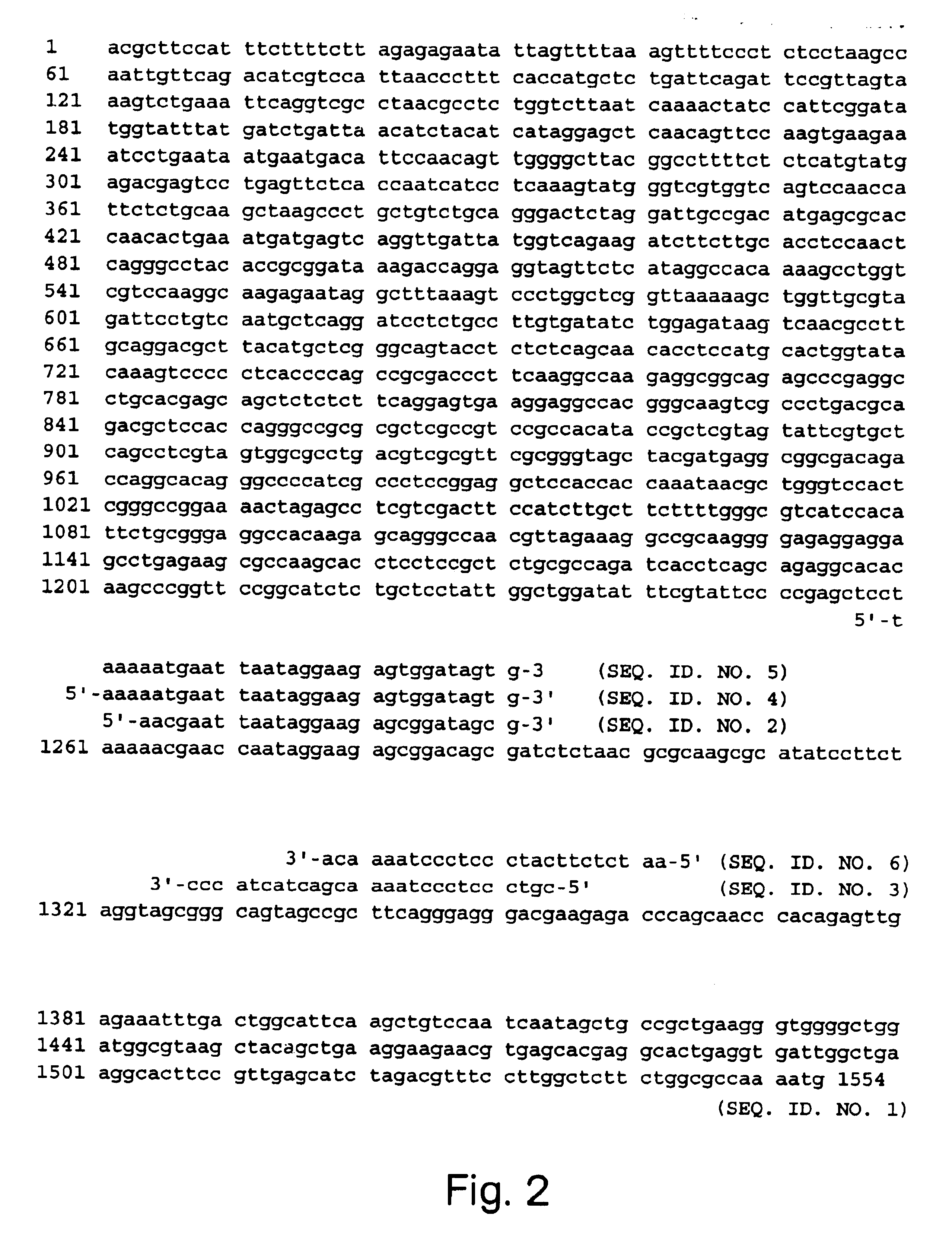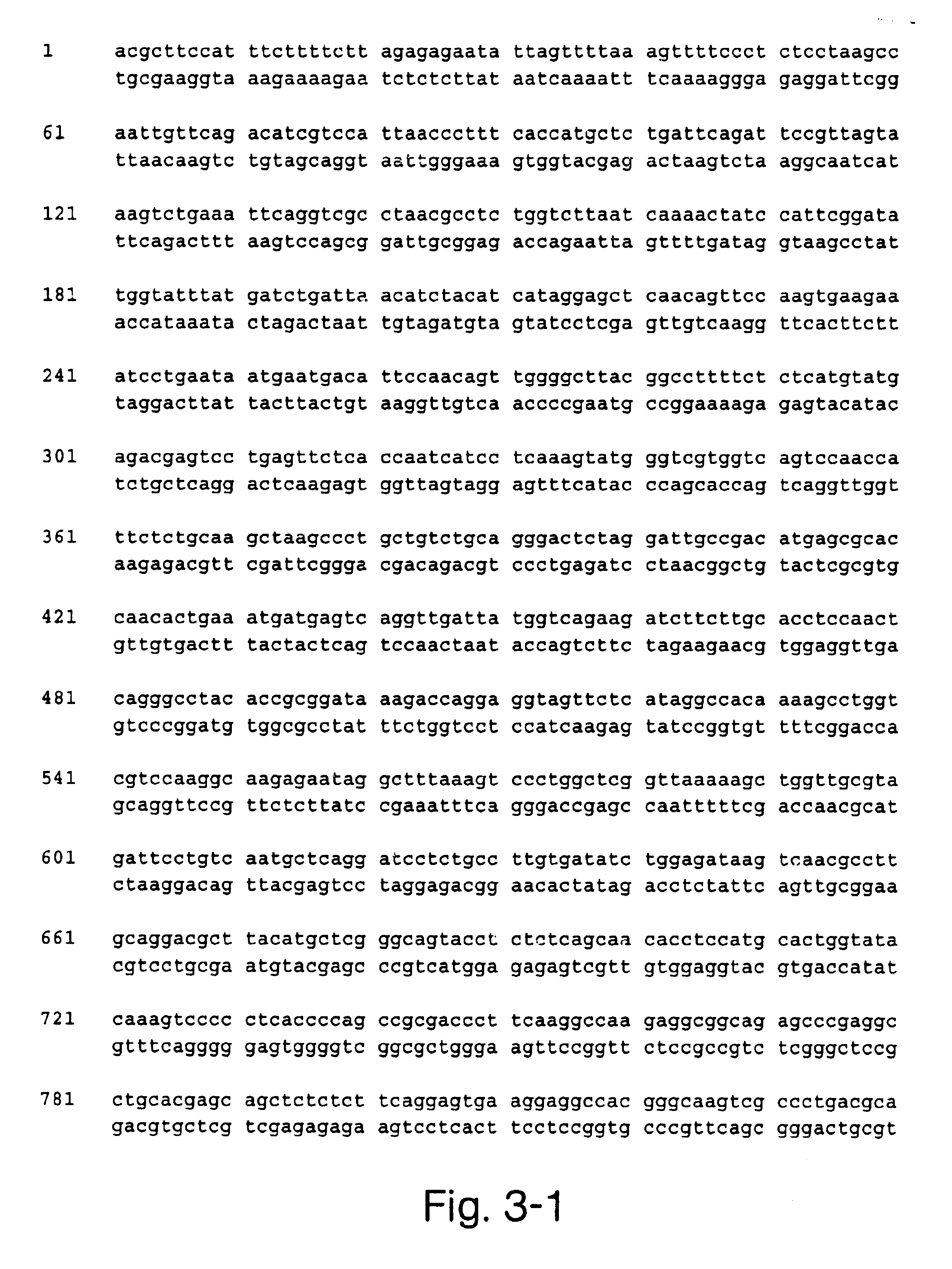Methods and compositions for detecting cancers associated with methylation of hMLH1 promoter DNA
a technology of promoter methylation and composition, which is applied in the field of methods and compositions for detecting cancers associated with methylation of hmlh1 promoter dna, can solve the problems of inaccurate rectal examination, unpleasantness, and unsatisfactory methods
- Summary
- Abstract
- Description
- Claims
- Application Information
AI Technical Summary
Benefits of technology
Problems solved by technology
Method used
Image
Examples
example 1
Selection of Primers
[0079]To attain maximal sensitivity and specificity, primers for hMLH1 MSP were designed that, following bisulfite conversion, selectively amplified compound-converted templates derived from either methylated (i.e., containing CpG dinucletides) or unmethylated (i.e., containing UpG dinucletides) versions of sequences contained within base pairs 1264 to 1354 of the hMLH1 promoter DNA of GenBank entry U83845 (FIG. 2), a region whose methylation status has been demonstrated to invariably correlate with hMLH1 expression in colon cancer (Deng, et al., 1999, Cancer Res, 59:2029-33). The primers annealed to a region of the hMLH1 promoter sequence that contained a total of five CpG dinucleotides with at least one CpG dinucleotide placed at the end of each primer to maximize discrimination between methylated and umethylated alleles after sodium bisulfite treatment. (FIG. 2.). To further enhance the discrimination between products amplified by the primer sets that amplifie...
example 2
Cell Lines and DNA Isolation
[0080]The cell lines RKO, SW480, Vaco-5, and Vaco-457 were used. RKO cells were obtained from M. Brattain at the University of Texas Health Science Center, San Antonio, Tex. SW480 cells were obtained from the American Type Culture Collection, 10801 University Boulevard, Manassas, Va. 20110-2209. The Vaco cell lines were established from colon cancers as described previously (Markowitz, et al., 1995, Science, 268:1336-8; Willson, et al., 1987, Cancer Res, 47:2704-13). Cells were cultured in MEM supplemented with gentamycin, L-glutamine, nonessential amino acids and sodium selenite. For Vaco-5 cells, growth medium was supplemented with 8% calf serum. For RKO, SW480 and Vaco-457 cells, growth medium was supplemented with 2% fetal bovine serum (HyClone), 10 mg / liter bovine insulin, 2 mg / liter human transferin and 1 mg / liter hydrocortisone. Monolayer cultures were grown at 37° C. in a 5% CO2 atmosphere. Genomic DNA was obtained by lysing cells in proteinase K ...
example 3
Serum as Bodily Fluid
[0081]Serum samples were prepared from whole blood immediately after collection of the blood. Serum samples were prepared by centrifuging the sample at 2700×g for 15 minutes and aspirating the serum. The serum was then stored at −80° C. until use. DNA was extracted from the serum by incubating 1 ml serum in a buffered extraction solution (140 mM Tris / 140 mM EDTA / 0.57% SDS) with proteinase K (500 μg) overnight at 50° C. in a shaking water bath. The sample was then subject to phenol:chloroform / chloroform DNA extraction twice, chloroform extraction, and ethanol precipitation. The precipitated DNA was resuspended in 25 μl distilled, deionized water and stored at −20° C. Approximately half of the sample was employed in the subsequent MSP assay.
PUM
| Property | Measurement | Unit |
|---|---|---|
| pH | aaaaa | aaaaa |
| pH | aaaaa | aaaaa |
| concentration | aaaaa | aaaaa |
Abstract
Description
Claims
Application Information
 Login to View More
Login to View More - R&D
- Intellectual Property
- Life Sciences
- Materials
- Tech Scout
- Unparalleled Data Quality
- Higher Quality Content
- 60% Fewer Hallucinations
Browse by: Latest US Patents, China's latest patents, Technical Efficacy Thesaurus, Application Domain, Technology Topic, Popular Technical Reports.
© 2025 PatSnap. All rights reserved.Legal|Privacy policy|Modern Slavery Act Transparency Statement|Sitemap|About US| Contact US: help@patsnap.com



